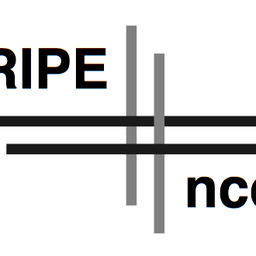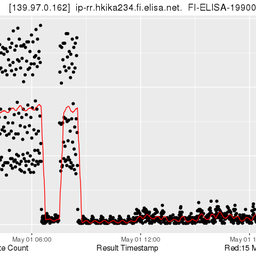This is the first in a series of articles in which we will describe our plan to set up a new measurement network and how we plan to master the engineering, economic and community-building challenges.
The RIPE NCC has been conducting active measurements from a network of approximately 100 Test Traffic Measurement (TTM) Test Boxes, the majority of which are located inside Internet Service Provider (ISP) infrastructure, for many years:

"Test boxes" perform a number of measurements, including one-way-delay and traceroute between the test boxes and Domain Name System Monitoring Service (DNSMON) queries of major authoritative DNS servers. They have a GPS receiver to synchronise their clocks sufficiently for one-way-delay measurements and are relatively expensive to install and maintain. TTM aims to help ISPs with monitoring their networks and planning transmission capacity.
Times have changed: transmission capacity has become relatively abundant in the industrialised world and the focus for measurements is shifting from network monitoring to getting hard data about the end-user experience, from measuring the core networks to getting data about the Internet as a whole and to do so quite comprehensively. Governments, for instance, are asking "Is the Internet working?" and "How is 'our' Internet doing compared to other countries?"
So what do we need to measure in order to answer such questions? Consider this picture of man-made light in parts of our region:

Nowadays it is fair to assume that the Internet has spread to most, if not all places where man-made light is visible here. Compare the two pictures and you will see that we need more comprehensive measurements than TTM to answer many of today's questions about the Internet. There are some ongoing activities already that try to do this, many in academic environments, but also some others like SamKnows , focusing on broadband speeds.
I believe that there is a need for a more comprehensive approach covering the whole of the RIPE region. We need to answer questions based on topological location: "How is this DNS root server reachable from these Autonomous Systems (ASes)?" We also need to answer questions based on geographical location: "How are services in Germany reachable from Ukrainian cities?" This means we have to have multiple vantage points both in each AS in the RIPE region but also in each significant geographical area.
Therefore we are working on a measurement network that has the potential to bring a number of vantage points to each and every AS in the RIPE NCC service region and to every major city. That would mean 50,000 vantage points or more. This network will provide active measurement capabilities from all these vantage points to all participants. In a series of articles on Labs, I will describe how we plan to master the engineering, economic and community-building challenges and how we roll out a pilot with at least 300 vantage points over the next few months. Stay tuned!





Comments 5
The comments section is closed for articles published more than a year ago. If you'd like to inform us of any issues, please contact us.
Anonymous •
I think it will be much better if the LIR will be provided with some API, like speedtest.net, but they will be able to put it on their server. Now open platform, such as speedtest.net just wins expense of free!<br /><br />I have no arguments for our owner to spend money on TTM. Therefore, we are using free speedtest.net.
Anonymous •
Thank you for your comment!<br /><br />You are right that most ISPs cannot justify the cost of a TTM test box. Yet we need more vantage points for many meaningful and useful measurements. So the challenge is to deploy more vantage points without the high cost. In the next few articles in this series I will present how those ISPs who cannot justify the TTM cost, like yours, can participate at a much lower cost. I hope that you will be able to convince your owner that the cost is justified or you may find a sponsor. Stay tuned.<br /><br />About speedtest.net: this is a very useful tool to measure one thing, broadband connection speed to a single server at the request of the user. For that it is excellent, but it is limited to that. We want to do different things like build a map from inter-AS mesurements and measure 24/7.<br /><br />Daniel
Anonymous •
We have been hosting two test boxes for many years. They have been working smoothly for years, and they can provide interesting information. But I have not been overly happy with their usefulness for operations. In particular, only a tiny subset of the data collected is available in near-real time. I.e., when we mess something up, the alert feature will tell me right away that some measured parameters have changed (even after ten years I cannot make sense of these mails though :-). But I cannot look at the actual current measurements - those are collected centrally only once every night, and I can check back in the next morning if I still remember by then. If this were fixed, there would be a much better incentive for hosting these boxes.<br />I have complained about this often, and it was always explained to me that this is how the system works, real-time visualization is very difficult because all the data have to be centralized first, that can only be done under the protection of the night, or whatever.<br />DNSMON somehow got around these restriction and provides near real-time correlated results over many test boxes, but I guess that application is more important than a couple of small ISPs out there.
Anonymous •
I have to second that, Simon.<br />One needs real time data from the TTM boxes.<br /><br />A TTM box could be a real advantage for an ISP in order to find network problems in an early stage before customers will notice.<br /><br />Right now we are spending €1000+ for a Test box in order to cover the project's costs and I don't see any feature enhancements that will help us, the ones who are paying for the ttm boxes, and not the anonymous community out there.<br /><br />Gunther<br />
Anonymous •
Simon, Gunther - thanks for your feedback on TTM. We're aware of some limitations in the original design of TTM (most notably the inability to provide real time data). The architectural challenges to counter this are non-trivial - we have been looking at possibilities for some time.<br /><br />In parallel with the work which Daniel has mentioned above, and being influenced by it, we're looking more closely at the TTM infrastructure to find concrete ways in which we can improve the service for our subscribers.<br /><br />I can't promise that this will happen tomorrow, or the next day, but it is in our planning.<br /><br />If you have any other specific feedback on the TTM service, we are always happy to hear it - you can contact me directly on <a href="mailto:markd@ripe.net">markd@ripe.net</a>, or send feedback via <a href="mailto:tt-ops@ripe.net">tt-ops@ripe.net</a>